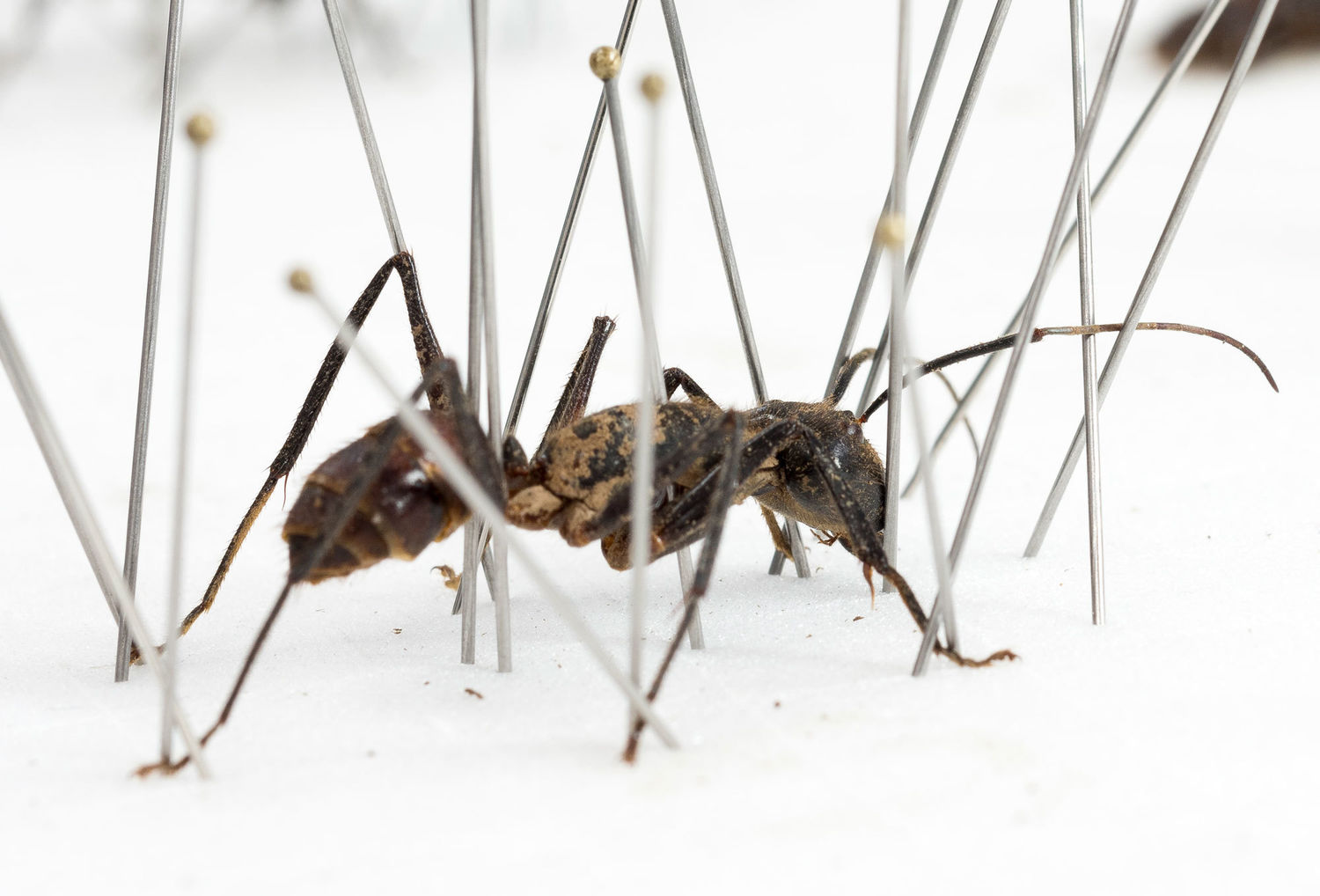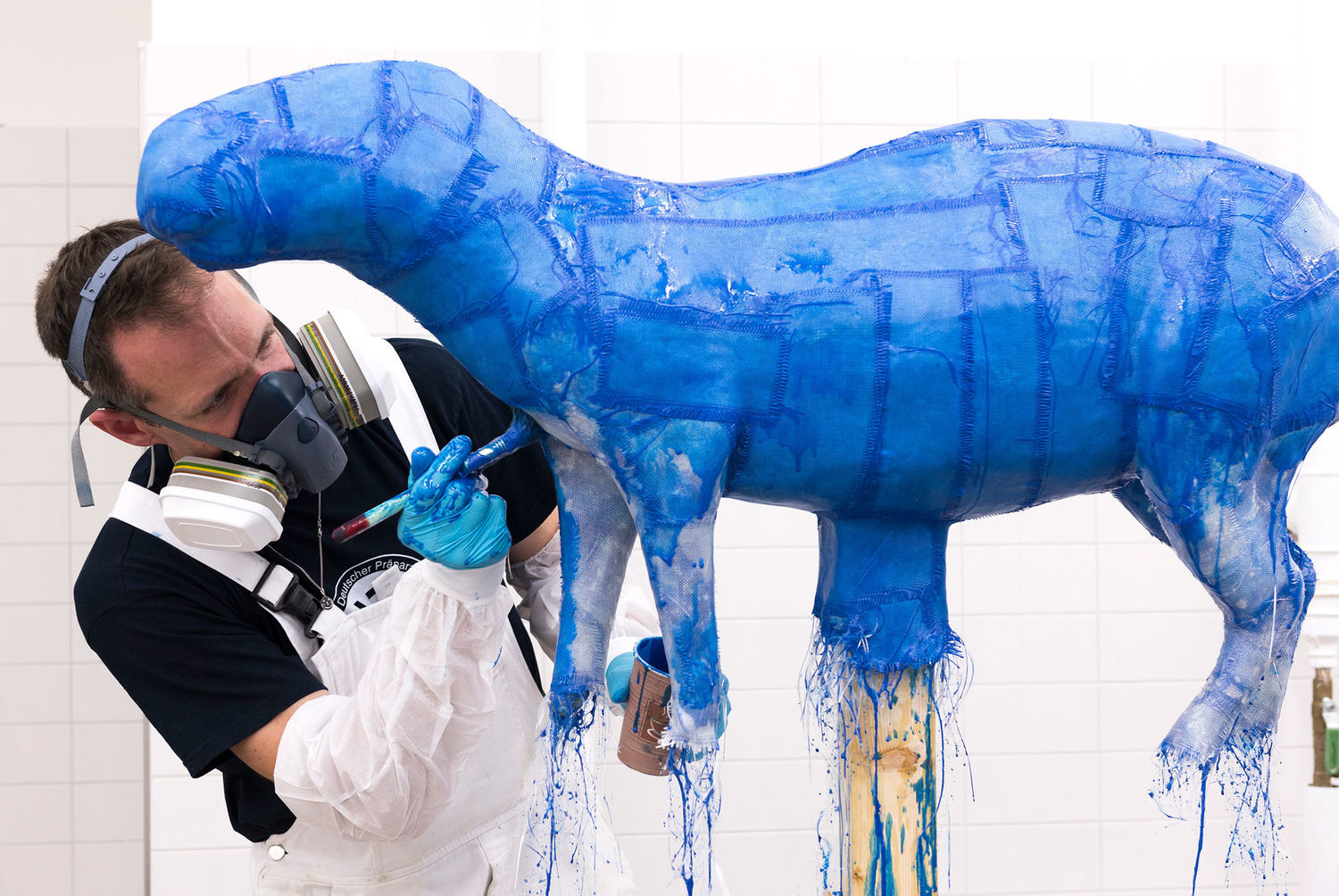The field of zoological taxidermy extends from insects to the large-scale dermoplasty of mammals. It also includes the production of fish and amphibian molds. First, a mold of the specimen is made using silicone rubber. In a next step, this negative mold is filled with plastic, resulting in a positive model of the object. Finally, the model is colorized — a particularly demanding job for the taxidermist. PEG conservation is another interesting preparation technique involving the substitution of the specimen’s cell water with polyethylene glycol under a vacuum. The tissue remains permanently fixed, reducing shrinkage to a minimum and lending the finished preparation a more vital appearance. This method is frequently used with invertebrates, reptiles, and smaller mammals. The restoration and new treatment of old preparations is also an important part of the taxidermist’s work. Many of the old preparations of animal specimens were not anatomically correct or are so battered by time that they are no longer fit for display.


















Museum Wiesbaden offers a variety of programs for all ages, from guided tours to workshops for preschools and schools, to teacher training and programs for students, private groups, or families with children.